Syria Today: From the Fall of a Centralised Government to the Al Qaeda Junta
Syria Centric - a regional analysis published at UK Column weekly
Sovereign Syria is being carved up into factional zones under the influence of the terrorist management in Turkey, Israel, the US, the UK, and the Arab Gulf states. Here we try to identify the external players and their Takfiri proxy gangs, their conflicting agendas, and their ultimate goals:
While Western narratives would have you believe that Syrian ‘rebels’ have organically overthrown a ‘brutal dictator’ and replaced him with a fair and democratic regime, the reality is far from this CIA/MI6-manufactured illusion.
Syria has been converted from a pluralist country that had enjoyed civil security and stability even despite the ravages of a regime change war that began in 2011 into a fragmented and traumatised state. It is a State, with its ability to defend itself or to protect its borders, destroyed by Israel immediately after the international coup. The country has been geopolitically divided into zones of influence controlled by disparate gangs backed by a growing number of international players. Takfiri gangs are brutalising and murdering ethnic minorities in Syria on a daily basis.
During the 14 years of brutal warfare, the control over different regions changed multiple times consistent with the dominance of various extremist armed groups, overlorded by Al Qaeda and ISIS. Both are proxies of Western hegemons intent on the overthrow of a Syrian Government that would not normalise relations with Israel or abandon Syria’s Resistance principles in the region.
On 5 March 2020, Turkey and Russia signed a fateful ceasefire agreement to end hostilities in Idlib in northwest Syria. In 2017, Special Presidential Envoy for the Global Coalition to Counter Daesh Brett McGurk claimed the city of Idlib had turned into a "safe zone for al-Qaeda terrorists on the Turkish border".
After the ceasefire agreement, Syria entered a period of military stagnation with only very few breaches in the ceasefire, none of them serious. The territorial map also remained stable, with the State controlling an estimated 70% of the territory.
Then on 27 November 2024, before the ink had dried on the ‘ceasefire’ agreement between Israel and Hezbollah in Lebanon, the armed factions in Idlib, led by Abu Mohammed Al Jolani, launched what became known as the ‘Operation to Deter Aggression’. The Al Qaeda (Hayat Tahrir Al Sham or HTS) aggression progressed from Idlib to Aleppo, Hama, Homs, Damascus, and the Syrian coast with lightning speed. The government finally fell on 8 December 2024 with President Bashar Al Assad’s flight to Moscow, where he was given ‘humanitarian’ asylum.
The focus of this article and subsequent analysis is not on explanations for the final fall of Damascus after 14 punishing years of war, sanctions, and bloodshed. This has been explained in the UK Column Syria Podcast series, which was recently deleted from YouTube in an apparent effort to erase the history of MI6 and CIA involvement in the destabilisation of Syria. It is a campaign that, overall, spans more than 75 years.
We will be concentrating on the current situation in Syria and how it might develop in relation to the regional conflict now rapidly developing since Israel’s aggression against Iran began.
This will include an overview of the zones of influence now established by various Western allied proxies and Takfiri groups in Syria. It will examine the nature of these groups, their allegiances, and their agendas.
As a first step, we should identify the armed factions and pinpoint their current zones of dominance. This will clarify the actual situation on the ground which is largely being disappeared from view by the Western media outlets, regimes, and UN agencies in an attempt to polish the image of their terrorist, ethnic cleansing proxies that have taken control over Syrian territory.
The main zones of influence are distributed as follows:
Northern Syria (Purple)
Northwest Syria, the coast, and central and southern regions down to Daraa (Green)
Northeastern Syria (Yellow)
Eastern Syria: the Badia (Black)
Southeastern Syria: al-Tanf (Gray)
Southern Syria: Sweida (Red)
Southern Syria: the Golan and Quneitra under Israeli occupation (Blue)
Northern Syria: Syrian National Army
Northern Syria is under the control of armed factions known as the ‘Syrian National Army’. The SNA was established by Turkey on 30 December 2017. Initially it comprised 36 armed groups and was created to expel the Kurdish forces and civilians and to occupy areas along the northern border strip between Syrian and Turkey. Three military operations achieved this aim: ‘Olive Branch’ (2,000 km²), ‘Euphrates Shield’ (3,800 km²), and ‘Peace Spring’ (4000 km²).
Following the fall of Damascus, this military formation expanded control to extended areas of eastern and southern Aleppo countryside (8,500 km²) under the umbrella of the HTS/Jolani ‘New Syrian Army’ or the Ministry of Defence. However, the SNA has not fully submitted to Jolani’s authority.
The SNA originally comprised three corps deployed in northern Aleppo and Turkish-led operation areas:
First Corps: This comprises around 9,000 fighters deployed in northern Aleppo, Afrin, Ras al-Ayn, Tal Abyad, Jarablus, and al-Bab. It is led by Brigadier General Moataz Raslan.
Second Corps: The Second Corps comprises approximately 14,000 fighters, active in al-Ra’i, Afrin, al-Bab, and Ras al-Ayn. It is led by Fahim Issa, who recently became Deputy Minister of Defense under Merhef Abu Qasra. This corps includes several factions like the Sultan Murad Division and the Sultan Malik Shah Division, among others.
Third Corps: This includes around 6,000 fighters stationed in Azaz and its vicinity, al-Bab, and Mare’ in northern Aleppo. It is led by Azzam al-Gharib, appointed by Jolani as governor of Aleppo after assuming power in Damascus.
There were, historically, disputes and defection of factions to what became known as the ‘National Front for Liberation’, which had control over parts of Idlib and Aleppo countryside. The NFL comprised 11 armed groups and about 25,000 fighters. A lengthy negotiation process under Turkish supervision led to its integration into the SNA on 4 October 2019.
The SNA then expanded to include 41 factions with approximately 55,000 fighters. Their ranks continued to increase, reaching around 80,000 fighters by 2024.
The SNA leadership convened in Damascus in January 2025 for what became known as the ‘Victory Conference’ that installed Jolani as the unelected President of Syria.
The SNA influence now encompasses all of Aleppo province, the industrial heart of Syria, parts of Raqqa, and Deir ez-Zor. They have engaged in confrontations with the US-backed Kurdish factions in northeast Syria without any significant military gains.
The SNA is directly subordinate to Turkey, executes Turkish directives without question, and displays the Turkish flag.
Northwest Syria, the Coast, Central and Southern Regions down to Daraa: Hay’at Tahrir al-Sham
In northwest Syria (Idlib) Al Qaeda in Syria, or Jabhat Al Nusra (JAN), led by Abu Mohammed Al-Jolani (now known as Ahmad Al Sharaa), began its entrenchment around 2013. It united with other armed factions in the battles against the Syrian Arab Army. These factions included the ‘moderate’ Free Syrian Army, recipients of the CIA-Timber Sycamore funding and weapons. ‘Timber Sycamore’ began under President Obama and ran in Syria from 2012-2017. Weapons destined for the FSA fell into the hands of ISIS ‘by accident’.
JAN, later rebranded as HTS, had nominal control of Idlib by 2015. Their forces had been power multiplied by a significant influx of trained foreign Takfiri fighters. JAN expansion continued for some time, and it waged internal wars against rival factions and warlords to establish dominance over Idlib, parts of Aleppo, Hama, and Latakia. This supremacy was largely facilitated by the US and Turkey, and very recently by Ukrainian special forces and specialists in Idlib.
Jolani created JAN as a Syrian branch of Al Qaeda in 2012, graduating from the ranks of ISIS. He claimed responsibility for some of the first and most brutal terrorist bombings in Damascus, Aleppo, and other cities. Originally, the group had maintained links to ISIS, but Jolani severed these links, pivoting to Al Qaeda. In 2017, the name was changed to ‘Fatah Al Sham’ and later to ‘Hayat Tahrir Al Sham’ (HTS). HTS was a merger of Fatah Al Sham, Nour Al Din Zenki (later withdrew), Ansar Al Din Front, and Liwa Al Haqq. Nour Al Din Zenki were responsible for the August 2016 horrific public torture and beheading of Palestinian child Abdullah Issa in Aleppo. Up to and beyond that point, they were funded by the US.
HTS and its motley crew of Takfiri elements established full control over northwestern Syria and created a so-called civilian administration under the name of the ‘Salvation Government’. Between 2020-2024, during the ceasefire, HTS formed 18 military brigades comprising an estimated 100,000 fighters, over 30% of whom are foreign.
HTS aligned with factions such as the Turkistan Islamic Party, Ajnad Al Caucasus, Ansar Al Tawhid, Jaysh Al Izza, Suqour Al Sham, and Ahrar Al Sham to launch the ‘Operation to Deter Aggression’ campaign last year. All these groups are guilty of heinous crimes against the Syrian people, crimes that, until now, have gone unacknowledged and unpunished by the UN and associated Western regimes. On the contrary, leaders of these fanatical sectarian groups have been rewarded for their savage crimes, with positions of power within Jolani’s unelected administration.
This operation began (as mentioned) on 27 November 2024, supported primarily by Turkey, but with the political and security assurances of the US, UK, and Israel.
It should be recognised that HTS and its alliance are the most disciplined and committed to forming the new Ministry of Defence of the new Jolani regime in Damascus, without reservation. All the leaders attended the aforementioned ‘Victory Conference’ in Damascus.
Northern and northwestern Syria are directly under Turkish control. Turkey established over 20 military bases and 130 military outposts between 2018-2024 under the pretext of countering hostile Kurdish factions. Unlike the SNA’s full subordination to Turkey, HTS has intermittently defied Turkish influence. This reflects the complex relations between Turkish Intelligence, the Deep State, and the Presidency, dynamics that affect their relationship with HTS and Jolani. This is something we will delve deeper into in the future.
In 2018, the Takfiri factions in Daraa province, south of Damascus, accepted reconciliation with the Syrian Government in a peace deal brokered by the Russians, Americans, and Jordanians. The involvement of Amman and Washington was, in part, related to the need to restart the energy pipeline from Jordan, through southern Syria, into Lebanon to enable Washington to avoid the Iranian/Hezbollah rescue strategy for an energy-deprived Lebanon.
The main faction that emerged from this ‘reconciliation’ was the Eighth Brigade, led by warlord Ahmad Al Awda. The group operated under the Russian-backed Fifth Corps. The Eighth Brigade took control of areas like Busra Al Sham, Al Hirak, and Khirbet Ghazaleh, and incorporated a group formerly based in eastern Daraa Province near the border with Sweida. Its strength was estimated to be 1,000 fighters.
The Eighth Brigade was actually the first group to enter Damascus on 8 December 2024. According to sources, its fighters escorted President Assad to Damascus Airport to take the flight to the Russian Hmeimim base on the coast. Al Awda withdrew his forces back to Daraa when HTS militia arrived to avoid direct confrontation.
However, the Eighth Brigade has remained in opposition to HTS, alongside the so-called Central Committees—former Ahrar Al Sham elements led by Abu Hayan Hit, who fully controls the Western region from Nawa to Tafas, Al Yadouda, Hit, and Muzyrib. Additionally, there is the Army of Al Mu’taz, led by Abu Murshid Bardaan, based in Tafas, along with smaller affiliated groups.
There are also splinter factions in Daraa Al Balad in Daraa City. While smaller in number, they possess heavy machinery and maintain a high degree of professionalism and solidarity among their members.
Al Awda later fled to Russia and the Eighth Brigade was ‘dissolved’. I have been told that he is now back in Syria, but this is unconfirmed. This allowed HTS to expand into Daraa and to take over local checkpoints and state institutions. However, the south remains one of the most unstable regions in Syria since the coup, both militarily and in terms of general security, a situation exacerbated by the Israeli incursions into southern Syria since December 2024.
So, on the surface, the Al Qaeda ‘Ministry of Defence’ controls areas stretching from the north and northwest of Syria to the coast, central regions, and the south, including Daraa and Damascus. However, the ongoing issues on the ground reflect a reality of factional control in managing these regions.
Northeast Syria: Syrian Democratic Forces (SDF)
After the Syrian Arab Army (SAA) was forced to withdraw from territory in north and northeast Syria during the early years of the regime change war, the Kurdish People’s Protection Units (YPG) emerged as local factions defending Kurdish-populated villages and towns. At the time, they received arms and support from both the Syrian Government and the Kurdistan Region of Iraq.
Initially, the Syrian Government and forces viewed the Kurds as allies who would alleviate the military burden on the State, struggling to deal with more than 100 battlefronts.
However, it was not long after the Western-orchestrated emergence of ISIS that Washington intervened and supported the Kurds by establishing military bases in the region east of the Euphrates. Washington provided the Kurdish separatists with political and military backing in an effort to recreate what they had done previously in Iraq, creating a US-controlled ‘autonomous’ region that just happened to contain the bulk of Syrian agricultural and oil resources. With the Kurdish breakaway backed by Washington and Israel, the Syrian State was limited to two enclaves still under their control, in Hasakah and Qamishli. You can read more on the weaponisation of the Kurds against the Syrian State here, here, and here.
In autumn 2015, the Kurds established the Syrian Democratic Forces (SDF) as a military entity, with the YPG as its backbone. The YPG is the armed wing of the leftist Kurdish Democratic Union Party (PYD), which is the Syrian branch of the Kurdistan Workers Party (PKK).
Gradually, the SDF incorporated Arab tribal militias that had accepted the new status quo. These included the Sanadid Forces, a tribal force from the Shammar tribe operating in Hasakah with around 2000 fighters led by Nawwar Hamidi Al Jarba. Another faction is the Raqqa Revolutionaries with around 1,500 fighters, mostly from the Walda tribe led by Ahmad Al Othman Bin Aloush, known as ‘Abu Issa al-Raqqa’.
There is also the Deir ez-Zor Military Council, numbering around 15,000 fighters from the Akidat and Baggara tribes, and led by Eyad Turki al-Khabil, who eventually clashed with the SDF over leadership in Deir ez-Zor before being arrested, replaced, and forcibly brought under SDF control.
The SDF also fought against other Syrian tribes that refused to fall in line, like the Akidat tribe, led by Ibrahim al-Hifl, one of the largest Arab tribes in the region. According to the U.S. Department of Defense (Pentagon), Kurds made up 40% of the SDF as of March 2017, while Arabs accounted for 60%. Other sources suggest the Arab percentage was lower. Nonetheless, there is a general consensus that the SDF leadership remains predominantly Kurdish.
Ultimately, the SDF is considered the most organised and closest to a conventional army in terms of size, structure, weaponry, training, and experience. It also currently controls prisons and camps housing several thousand ISIS members. You can read more about the CIA/US connections to the control of these camps here. Many Syrian analysts have claimed that there are similarities between the ISIS caliphate building and the Kurdish ethnic cleansing of the majority Arab populations from the resource-rich northeast.
Its civilian wing, the Syrian Democratic Council (SDC), has achieved administrative success comparable to that of the Salvation Government (HTS’s civilian wing). Militarily, with around 100,000 fighters distributed among military and security branches such as the Women's Protection Units and the Syria Military Council, and with support from Washington and the Kurdish depth in northern Iraq, the SDF has become a powerful rival to HTS. It has managed to preserve its zones of influence, initially rejected the authority of the new Damascus leadership, and did not take part in appointing Jolani as leader.
On 10 March 2025, Mazloum Abdi, leader of the SDF, signed an agreement with Jolani to merge with the Damascus authority. Though this meeting was largely symbolic—meant to deflect attention from the horrific massacres committed by the HTS factions along the coast, against unarmed civilians from minority groups during what came to be known as the Black March Massacres (6 March)—both Ankara and Washington expressed support for the deal. However, disagreement over how to implement it has left the agreement symbolic for now, with ongoing negotiations between the SDF and Jolani.
In practice, the Arab component of the SDF shares only geography and US protection with the Kurdish forces. Politically, the Arabs' vision differs significantly from that of the YPG, which has so far refused to integrate into the new Ministry of Defense except as a distinct military body with its own territorial and organisational autonomy in northeastern Syria—something the new Damascus leadership strongly opposes.
Still, the SDF is under pressure to agree to integration with HTS. The risks for the SDF include Arab discontent, the threat of a Turkish incursion, US withdrawal, a limited representation of all Kurdish factions, and the dominance of PKK leadership from the Qandil mountains. These pressures may force a compromise with Jolani.
Practically speaking, the region currently remains under US control through its military bases, which provide political and military protection for the SDF as a local settler proxy.
Eastern Syria: Control of ISIS (Daesh) in the Syrian Desert
ISIS kicked off its operations in Syria in 2012 commensurate with the rise of Jabhat Al Nusra. After Jolani split from ISIS, Al Baghdadi came to Syria to fight against Jolani, accusing him of betrayal and apostasy. At the same time, ISIS was fighting the SAA, the SDF, and other military factions in Syria. In a landscape of tangled alliances and conflicts, ISIS was ostensibly the enemy of all. The reality, of course, was that the ISIS 'Caliphate’ campaign was another regime change outreach project managed by the US alliance.
The group managed to attract large numbers of fighters, especially foreign extremists, becoming a magnet for Takfiris from all over the world. Turkey was the first to facilitate ISIS presence in Syria.
ISIS took control of oil, gas and wheat resources. These provided ISIS with lucrative gains and funding.
In 2015, eventually, coordinated military campaigns were launched by the Syrian Arab Army and its allies, including local forces like the National Defense Forces, Local Defense, and Baath Battalions, as well as resistance groups such as Hezbollah, Popular Mobilization Forces, Fatemiyoun, and Zainabiyoun. These efforts were directly supported by Iranian military advisors and led by Lt. General Qassem Soleimani, under heavy Russian air cover, to drive ISIS out of the Syrian desert and parts of the southern regions.
This prompted the US-led International Coalition to mobilise the SDF quickly against ISIS in a race with the Damascus-led alliance to capture and control the key oil and gas fields in the area. The lines between ISIS and the Kurds were later, at times, blurred.
On 6 December 2024, as the Syrian Government was on the verge of collapse, ISIS launched an attack on Syrian army forces in Palmyra, forcing them to abandon their positions and flee to Iraq amid a total breakdown in command and control. The group seized over 16,000 km² and took over former SAA depots in the region.
Notably, despite declaring enmity toward the Damascus Junta and labelling Jolani an infidel for his perceived embrace of Western ideology, ISIS has not yet conducted any significant operations, aside from occasional clashes with the new regime's forces as they attempted to open the Damascus-Palmyra-Deir ez-Zor highway.
What is clear, however, is that ISIS has taken advantage of the orchestrated chaos to regroup. Its fighters have spread covertly across every Syrian province. Despite ideological similarities with HTS and its affiliated factions, ISIS remains a bitter enemy. Both sides have killed more of each other's members than any other group during the Syrian conflict in bloody, exhausting battles that forced HTS to retreat and entrench in Idlib.
It is expected that ISIS will resurge through terrorist operations. One such possible example is the horrific 22 June bombing of St. Elias Church in the majority-Christian Duweila district of Damascus. Though the attack has not been officially claimed, all indications point to ISIS, especially given the modus operandi: a gunman entered the church during mass, opened fire on worshippers, then detonated himself, killing over 20 and injuring more than 50.
It seems that Syria is not going to be given respite from the decades of bloodshed initiated by the Western-Israel-Turkish alliance. People in Syria also believe that ISIS has become the bogey man to cover-up HTS crimes against the ethnic minorities. This case is no different according to local protests condemning HTS lack of response and possible involvement. Jolani’s militia are regularly seen sporting ISIS patches during localised massacres and ethnic cleansing campaigns.
Southeast Syria: Al-Tanf and the Free Syria Army
In 2015, what became known as the ‘New Syrian Army’, or ‘Maghaweer al-Thawra Army’, first emerged with American and Jordanian support and training. Its alleged objective was to combat ‘ISIS’, but its focus was the Syrian Arab Army, taking the unlawful US military base at Al-Tanf, located near the Jordanian and Iraqi borders, as its headquarters. There are various videos showing the US/UK special forces training this extremist faction at Al Tanf, that incidentally has a US-imposed 55km exclusion zone surrounding it, on Syrian territory.
Various estimates suggest that the number of fighters in the ‘Free Syria Army’ is around 2,500, primarily composed of tribal members from that region who receive continuous training from US and British forces. In 2022, the faction was officially renamed the ‘Free Syria Army’ and a new leader, Fareed Qassem, was appointed. He was later dismissed in 2024 and replaced by Salem Al-Antri, who continues to lead the group to this day.
The ‘Free Syria Army’ held several meetings with the Jolani regime and with so-called Defense Minister Murhaf Abu Qasra. A final agreement was reached, placing the ‘Army’ under the authority of the Ministry of Defense of Al Qaeda in Damascus. Leaders of the formation attended what was called the "Victory Conference" and endorsed all its outcomes. This explains their expansion from the 55-kilometre zone in Al-Tanf to the Al-Dumayr Airbase, approximately 10 kilometres east of Damascus.
Southern Syria: As-Suwayda (Al-Ahmar) - The Druze
While Western media will reduce the Druze to a homogenous group, it actually comprises factions that have opposing policies with regard to normalisation, both with Israel and the Al Qaeda regime in Damascus. The most prominent factions in As-Suwayda include:
‘Men of Dignity’, led by Sheikh Abu Hassan Yahya Al-Hajjar,
‘Forces of Sheikh al-Karama’, led by Laith Al-Balous,
‘Ahrar al-Jabal Gathering’, led by Sheikh Suleiman Abdul-Baqi, and
‘Counter-Terrorism Forces’, previously the armed wing of the ‘Al-Liwaa Party’, led by Malik Abu Khair, who announced their separation from the party, though it's still unclear whether the separation has taken full effect.
Additionally, there is the ‘Mountain Brigade’, whose former leader, Marhej Al-Jurmani, was assassinated, and no successor has been named to date. There are also the ‘Al-Ulya Forces’ in Salkhad and the western countryside, which are affiliated with the ‘Mountain Brigade’.
The exact numbers of these factions are unknown, especially since the factionalism in As-Suwayda is largely a social phenomenon aimed at protecting the region. These factions are spread across As-Suwayda and also operate in areas of Damascus such as Jaramana and Sahnaya (in the Damascus countryside) to protect Druze-majority areas and repel attacks by ISIS.
However, in April, there were confrontations with HTS-affiliated gangs following a fabricated audio recording in a Druze dialect insulting the Prophet Muhammed. This led to violations resembling the HTS sectarian pogroms in the coastal areas that are still ongoing today.
Druze are divided over integration into the Al Qaeda Ministry of Defence and the new state structure. Negotiations have not yet resolved contentious issues. Sheikh Hikmat Al Hijri, the spiritual leader of the Druze in the region, represents the wing that rejects integration entirely and calls for autonomous governance to ensure the protection of the local population from future sectarian violations. The majority of Druze factions have followed his lead.
Sheikh Al-Hijri refuses to join the Ministry of Defense before the drafting of a constitution that guarantees the rights of As-Suwayda and the formation of a civil state. He has also insisted that the army be a national, non-sectarian force. The absence of As-Suwayda factions from the ‘Victory Conference’ despite being invited by Jolani sent a clear signal to the Al Qaeda regime.
Although there are no foreign military bases in As-Suwayda, an agreement between Sheikh Mowafaq Tarif, the spiritual leader of the Druze in Palestine, and Israel and the US has provided significant protection for the Druze of As-Suwayda—particularly during the recent clashes.
However, it is worth noting that Israel has other objectives in adopting the protection of Syria’s Druze, the majority of whom reject Israeli patronage. Palestinian Druze constitute an important part of the Israeli army, and Netanyahu aims to exploit the Syrian Druze to expand and establish a buffer zone—first in southern Syria, then extending into northeastern Syria through ‘David’s Corridor’, according to The Cradle: “Through ‘David's Corridor,’ Israel aims to forge a geopolitical artery stretching from occupied Golan to Iraqi Kurdistan, reshaping West Asia under the guise of fostering minority alliances and realizing biblical claims”.
Southern Syria: the Golan and Quneitra under Israeli Occupation
Immediately after the fall of Damascus, Israel launched the largest aerial operation in its history against Syria. This destroyed the SAA key military, air force, and naval installations within 48 hours. The greatest loss for Syria was the destruction of the air defence systems and radar which had previously prevented Israeli freedom of operation in Syrian airspace.
This aerial assault coincided with a Zionist ground invasion of the demilitarised zone, an area Israel had not dared to penetrate since the Disengagement Agreement signed with Hafez al-Assad in 1974. It quickly advanced beyond this zone, launching a new invasion into Syrian territory, occupying Mount Hermon and new areas in Quneitra and western rural Daraa.
Israel continued, later, to target the remaining positions of the Arab Syrian Army, in addition to the positions of the factions that had taken control of Syria, to pressure the Jolani-led administration. It also leveraged the relationship between Syrian Druze and the Druze of Palestine to intervene more deeply under the pretext of protecting the Druze and other minorities, as we have pointed out.
Israeli forces clashed more than once with the residents of Daraa during their attempts to storm villages like Kouya, causing casualties among those who resisted. Notably, there exists a force known as the ‘Popular Resistance in the Golan’ originally founded by the Arab Syrian Army indirectly with Iranian support and trained by Hezbollah over several years, especially after the 2006 war. It was previously supervised by Samir Kuntar, who was released from Israeli prisons in a prisoner exchange deal in 2008 before being assassinated by an Israeli missile strike on his apartment in Jaramana, southern Damascus, on 19 December 2015.
These groups continued to operate and grew, reaching an estimated force of over 30,000 fighters. In 2024, they carried out several rocket strikes from the Golan toward Israel, in cooperation with Palestinian Resistance factions.
The fate of these fighters remains unknown. However, it is speculated that most relocated to Lebanon immediately after Damascus was captured. This would have been facilitated by Hezbollah. It is also believed that some did remain inside Syria and are, now, in hiding.
The demilitarised zone covers an area of approximately 235 km², while the newly occupied territories amount to around 310 km², in which Israel has established 11 new military outposts. This is in addition to the Golan Heights, which Israel has unlawfully occupied since 1967.
Conclusion
Syria is now a fragmented and complex arena, and envisaging the unity of all involved factions under one Syrian national and anti-Takfiri banner is not going to be an easy task. The country remains without a true Syrian military, representative of all the ethnic minorities in Syria, as the SAA was known to be.
HTS, despite concerted efforts by its external backers, led by Damascus-based, MI6-linked operatives, faces what appear to be insurmountable challenges. How will HTS secure a sufficient budget from the cartel that brought Al Qaeda to power, to equip the ‘New Syria’ military? The US appears to have abandoned Jolani to seek Russian or Turkish weapon supply, according to a New York Times interview with Jolani in April this year. 90% of Syrian military capabilities were destroyed by Israel in just two days in 2024 with subsequent bombing raids, further impacting Syria’s ability to recover its military sovereignty. This is a reality that Israel, among other Zionist-aligned nations, is unlikely to allow to be reversed.
The Syrian Democratic Forces (SDF) and factions in Sweida are setting strict conditions for joining the Al Qaeda-infested military institution. More than 60 armed factions currently operate across Syria, over half of which fall under the umbrella of the Turkish-backed Syrian National Army, which comprises at least 80,000 fighters whose primary mission is to eliminate the SDF. The remaining factions operate either within alliances or independently but have policies or agendas that potentially conflict with those of Jolani and his handlers across the regime change alliance.
The US-backed SDF, which controls roughly 25% of Syria’s territory, has expressed conditional willingness to join the Al Qaeda army complex, but only as an independent military bloc. This proposal has been decisively rejected by the Al Qaeda regime. Forcing compliance could spark a difficult confrontation for Jolani. The SDF comprises over 100,000 trained fighters and possesses heavy weaponry, according to its commander, Mazloum Abdi. Without a near-term agreement with the SDF, the Turkish-aligned Syrian National Army will likely remain under Ankara’s control, independent of Damascus, a major obstacle to Jolani shoring up his fragile power base with anything remotely resembling a loyal military bloc.
Another complex issue is the presence of foreign extremist fighters who flooded into Syria after the regime change war began in 2011. Following the international coup, Jolani appointed six of them to senior military ranks—appointments that sparked local criticism and fear, after 14 years of facing ethnic cleansing massacres at their hands across Syria.
What is clear is that Jolani could not manage the province of Idlib without brutal, oppressive tactics and Takfiri policies that cracked down on dissent and imposed harsh Sharia law penalties on civilians. His dominance was sustained with the help of Washington in eliminating the leaders of factions that might have challenged his leadership. He survived as a warlord, through extortion, intimidation, sectarian supremacism, and diktats.
Jolani clung onto leadership in Idlib because he made promises to the Takfiri factions that he cannot keep if he is now forced to accept Western protection and normalisation with Israel. He is facing dissent across all sectors of Syrian society, and while Syrians are still deeply traumatised and facing daily abductions, massacres, assassinations, property theft, and ethnic cleansing; Jolani cannot sustain this level of brutality without facing eventual resistance and military backlash from so-called ‘regime remnants’ or from within the ranks of his own precariously aligned militia. He is trying to survive in an orchestrated chaos from which there is no escape when your leadership is compromised by the agendas of the regional players who can remove the safety nets at any moment and send you into free fall. Ask Zelensky.
Over the following weeks, we will also delve deeper into how Syria will be profoundly affected by the Israeli aggression against Iran and the escalating conflict in the region. Jolani has been noticeably quiet since the Iran-Israel-US war began. He knows that it may well signal the end of the Takfiri project in Syria, and his short rule may go up in flames if the regional Resistance (including the estimated 100,000 SAA that left Syria when Damascus fell) enters the fray in earnest against US bases and puppet terrorist regimes.
We may also see Jolani’s Syria being used as a launchpad for Takfiri attacks against Lebanon and Iraq in the near future, by Israel, to occupy and weaken the non-state Resistance factions in these countries that will support Iran in the case of a regional escalation. This will be discussed further next week.
***
Your contributions support my work and you alone xxxx please do consider subscribing or making a one-off payment to ‘Buy me a Coffee’. Thank you xxxx



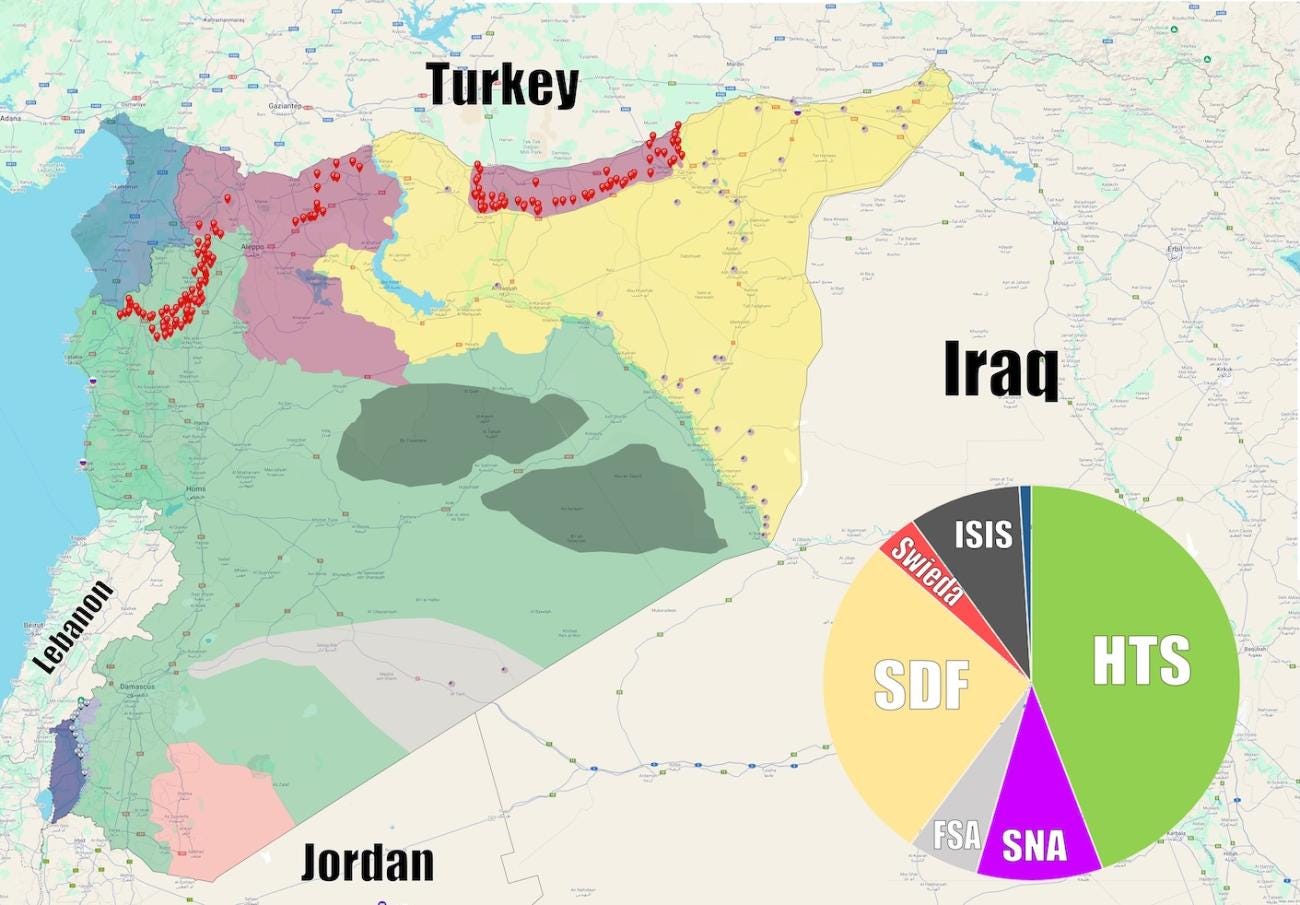
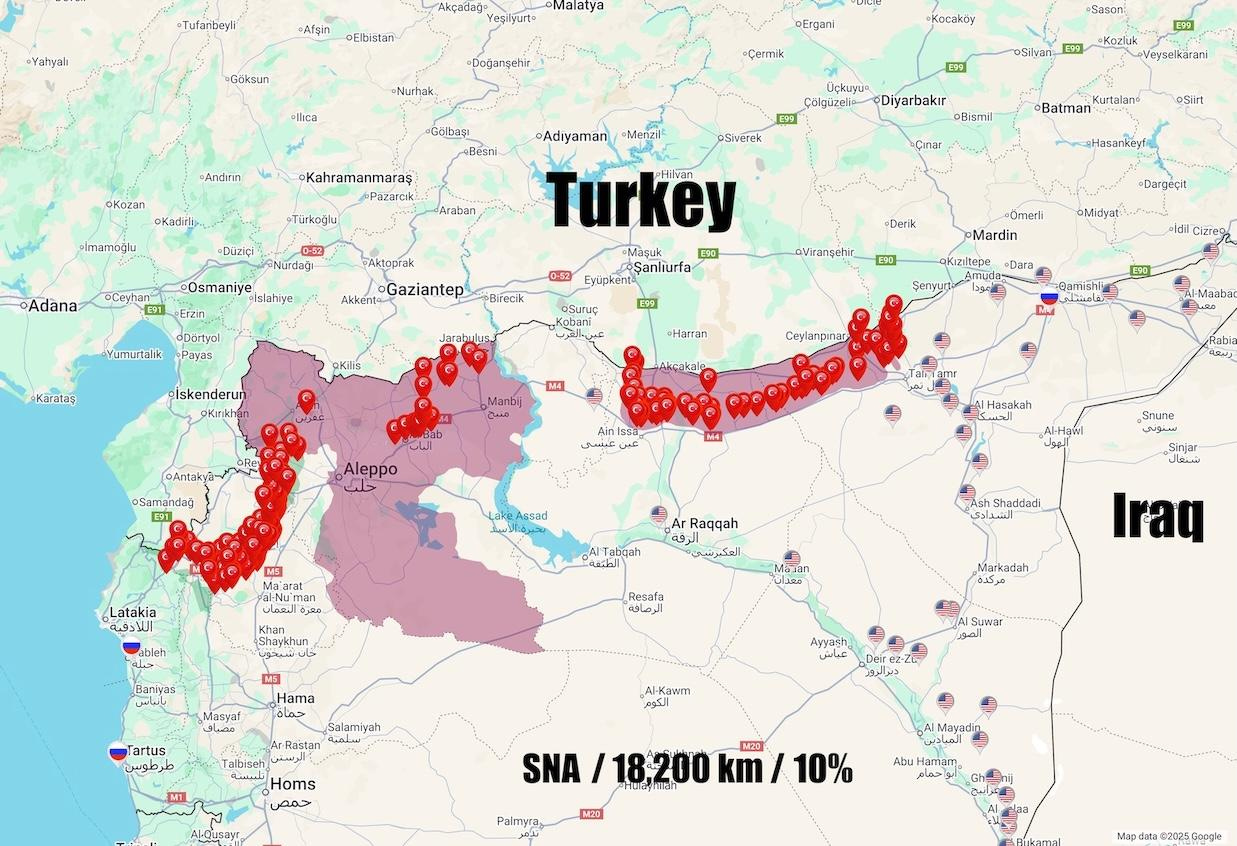

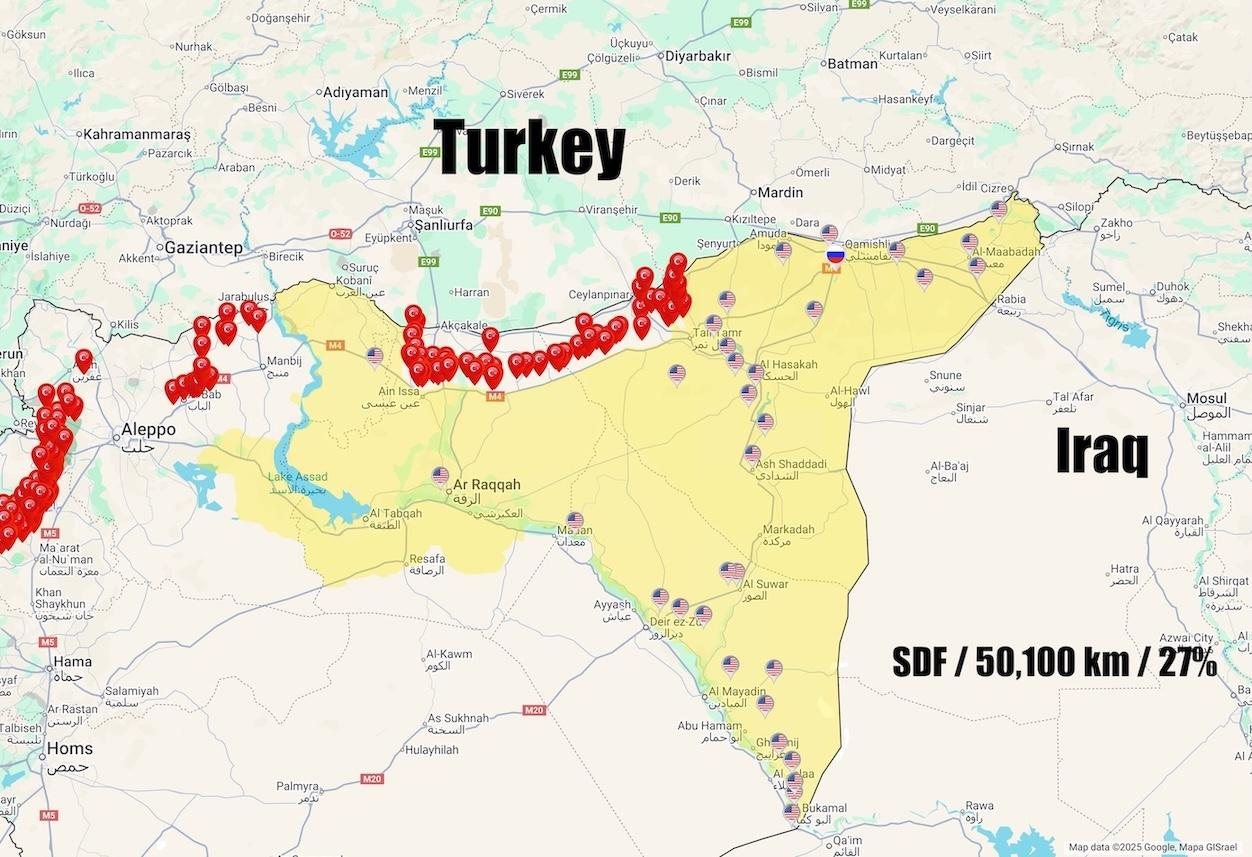
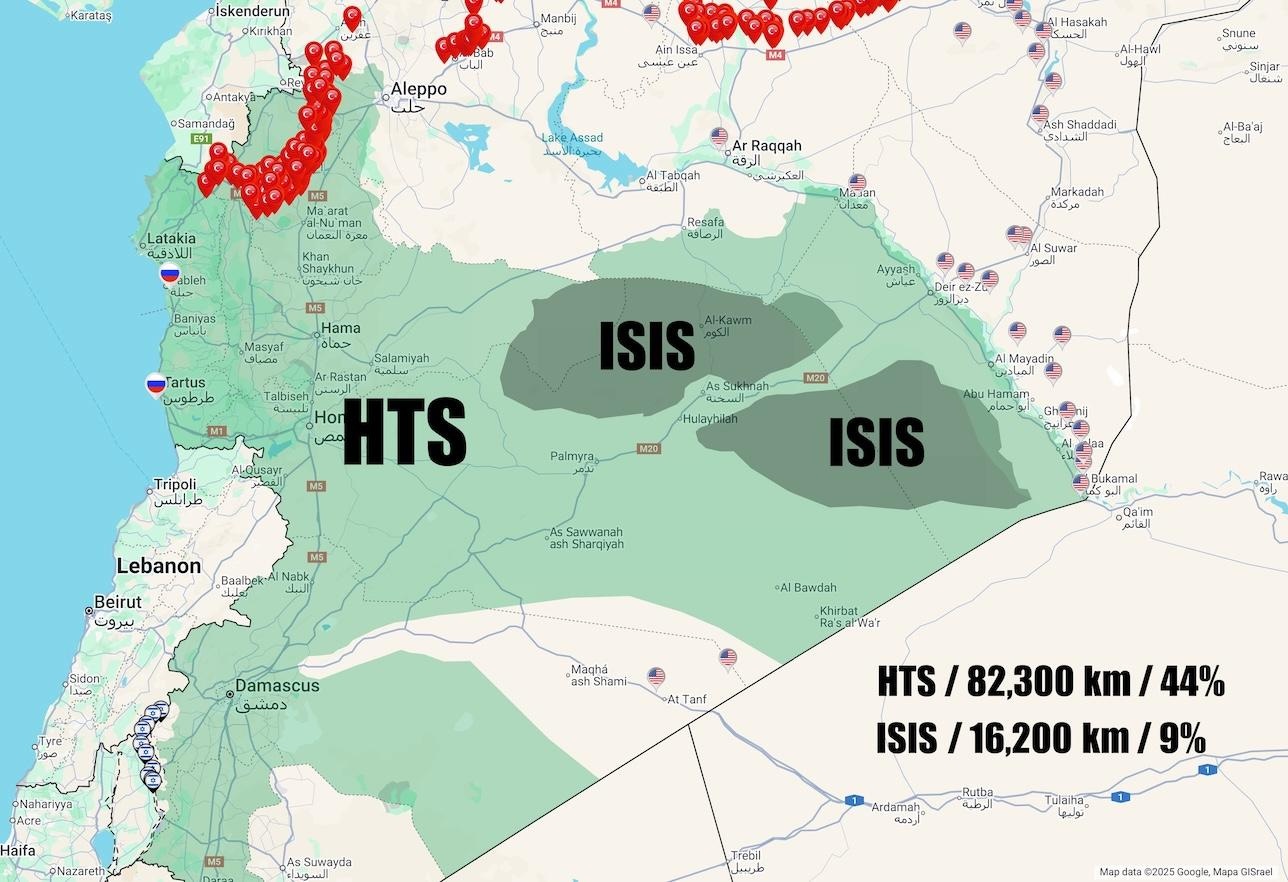
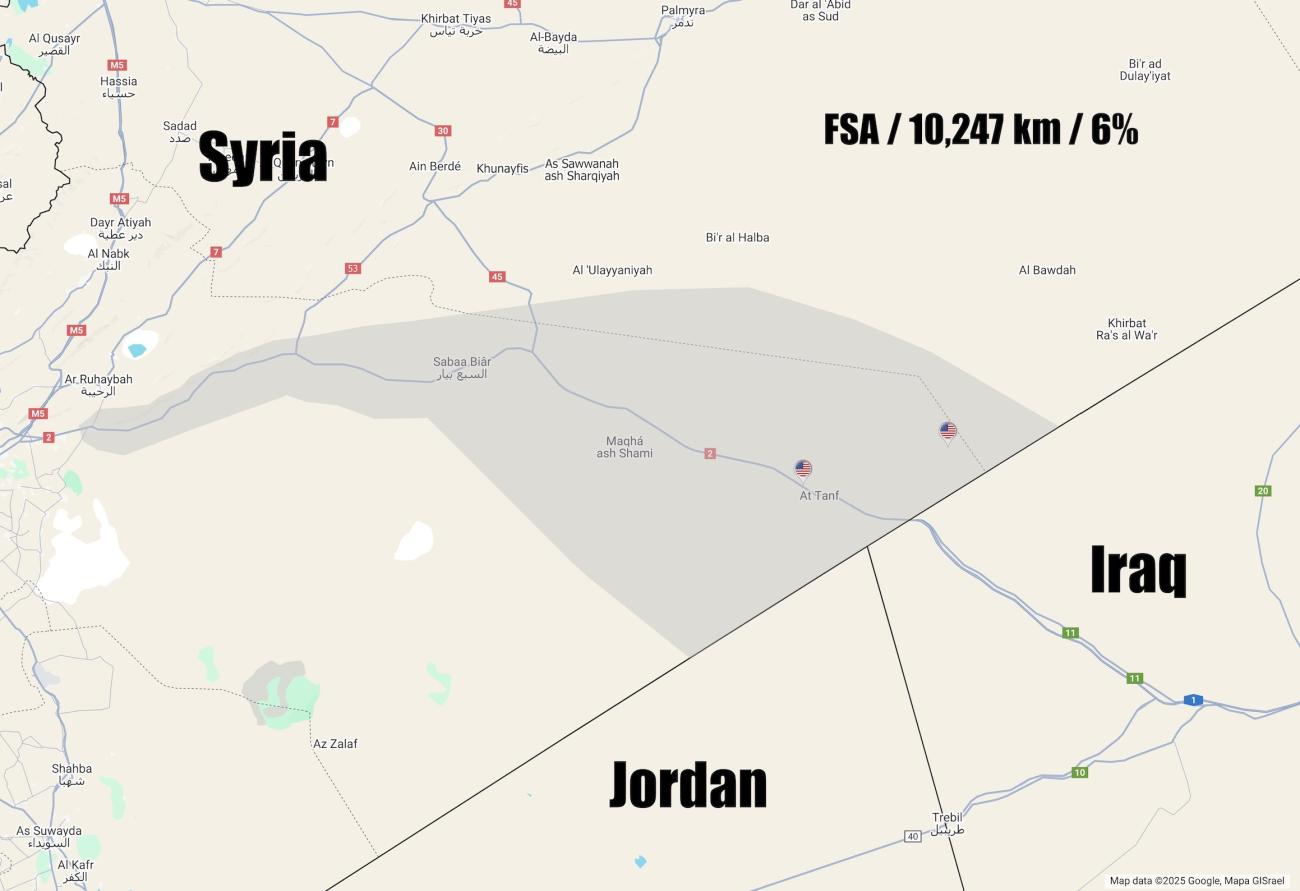
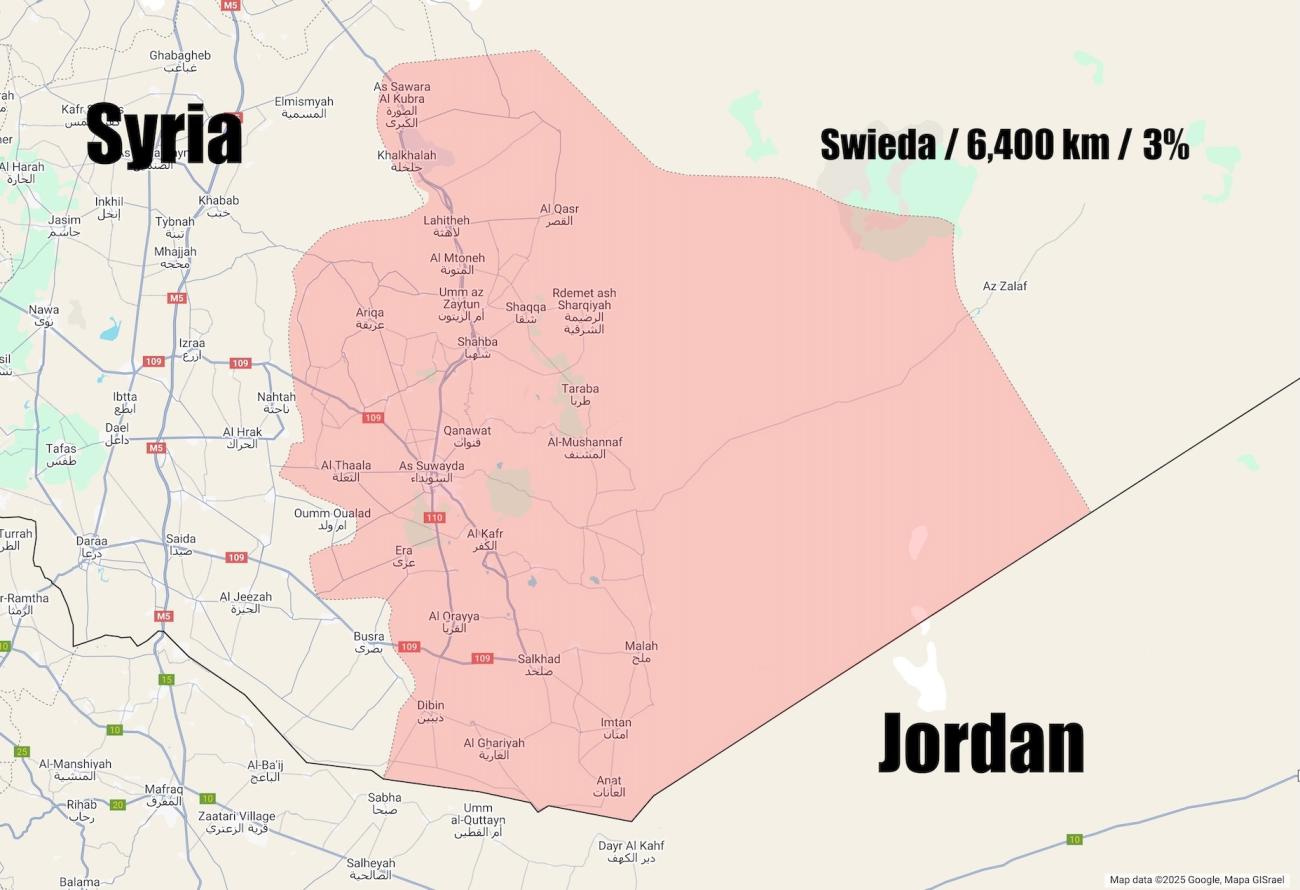
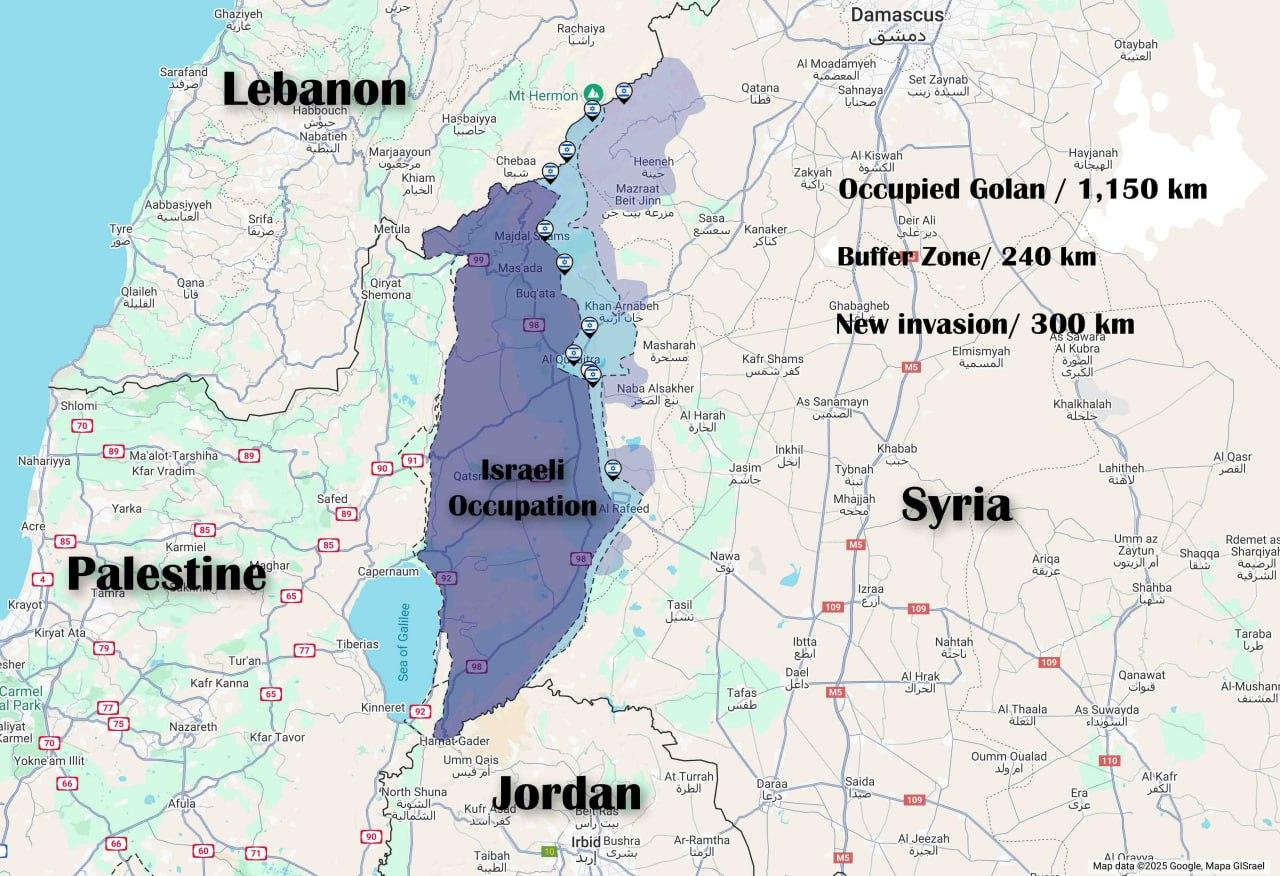

Thanks, Vanessa. An invaluable and much-appreciated overview of the unholy mess that has sadly become of Syria today.
And now another valuable news source today is covering Syria:
They’re Hunting Christians in Syria – And No One Is Talking About It | Redacted w Clayton Morris:
https://rumble.com/v6v9zux-theyre-hunting-christians-in-syria-and-no-one-is-talking-about-it-redacted-.html?e9s=src_v1_eh_cs